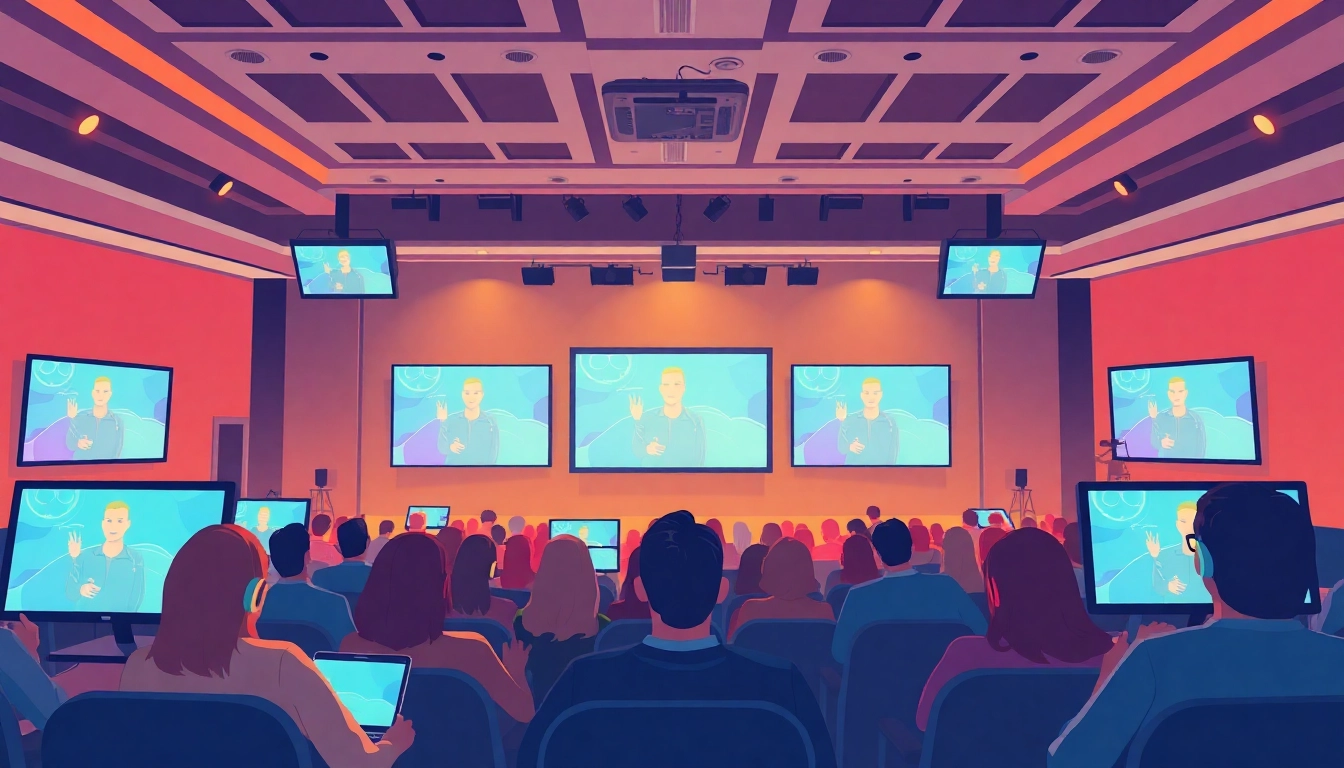Understanding the Virtual Audience System
What is a Virtual Audience System?
A Virtual Audience System (VAS) is a sophisticated technology designed to create and manage interactive experiences for audiences participating in events, conferences, and presentations remotely. This innovative system harnesses online platforms to connect speakers and attendees, facilitating real-time interaction that mirrors live audience dynamics, even when participants are physically separated by miles. The system enables features like live polling, Q&A sessions, and breakout discussions, all of which help maintain engagement and promote a sense of community among participants. By integrating a Virtual Audience System, organizers can enhance the overall experience, ensuring that every voice is heard and every question is addressed.
Key Features of Virtual Audience Systems
Virtual Audience Systems are equipped with a range of features that cater to the interactive needs of both presenters and attendees. Here are some of the essential components:
- Live Polling and Surveys: Facilitates instant feedback by allowing the audience to respond to specific questions in real-time.
- Q&A Functionality: Enables participants to ask questions during the session and vote on the most popular ones, ensuring key concerns are addressed.
- Breakout Rooms: Offers smaller group discussions where participants can engage more deeply with topics of interest.
- Chat Features: A built-in chat function promotes informal interactions and networking among attendees.
- Analytics Tools: Provides data on audience engagement, participation rates, and overall attendee satisfaction, allowing organizers to refine future events.
Why Use a Virtual Audience System?
Integrating a Virtual Audience System into your event planning allows for a more inclusive and interactive experience. As organizations increasingly look to leverage digital platforms for events, understanding the unique benefits of a VAS is crucial. Firstly, it reduces geographical barriers, allowing participants from around the world to join without travel restrictions. Secondly, it significantly enhances audience engagement through interactive features designed to keep attendees interested and involved. Lastly, data analytics provided by these systems empower organizers to measure engagement effectively and iterate on their strategies for improved future events.
Benefits of Implementing a Virtual Audience System
Increasing Audience Engagement
A vital benefit of employing a Virtual Audience System is its ability to enhance audience engagement dramatically. Traditional webinars can sometimes lead to passive viewing experiences, where participants merely watch slides without interaction. In contrast, a VAS incorporates various interactive elements, such as polls, quizzes, and chat rooms, fostering a two-way communication stream. This engagement approach not only boosts participant interaction but also encourages retention of information shared during the event.
Enhancing Interactive Experiences
Virtual Audience Systems can transform a standard virtual meeting into a dynamic and interactive event. By enabling features like breakout sessions and audience-led discussions, attendees can connect over shared interests, contributing to a more fulfilling experience. This level of interaction can lead to networking opportunities that mimic real-life events, enriching the overall attendee experience and enhancing the value derived from participation.
Driving Better Event Metrics
Utilizing a Virtual Audience System provides valuable insights through data analytics, allowing organizers to track participation rates, engagement levels, and feedback. Such metrics are crucial for understanding what worked well and what needs improvement. Event planners can leverage this data for future strategies, creating more tailored and effective event experiences that resonate with participants.
Common Challenges with Virtual Audience Systems
Technical Issues and Solutions
Despite the advantages of a Virtual Audience System, several technical challenges may arise. Issues include poor internet connectivity, software malfunctions, or inadequate training for speakers and participants on how to use the tools effectively. However, these hurdles can often be resolved through thorough preparation. Testing the technology in advance, providing comprehensive user guides, and ensuring a reliable internet connection can mitigate most technical problems.
Audience Participation Hurdles
One common challenge is getting participants engaged in a virtual environment. Unlike in-person events, individuals might feel more inclined to disengage in a virtual setting. To combat this, organizers can incentivize participation with rewards, create engaging content that prompts audience interaction, and ensure a lively facilitation style that encourages attendee involvement.
Integrating Feedback Loops
Establishing channels for feedback during and after the event can also pose a challenge. An effective Virtual Audience System must have mechanisms for gathering participant comments and suggestions to improve future events. Utilizing tools for real-time feedback collection through polls or surveys during the session can keep the presenters informed and engaged with audience needs.
Best Practices for Maximizing Impact
Designing User-Friendly Interfaces
To ensure the success of a Virtual Audience System, it’s essential to prioritize user experience. Developing a straightforward and intuitive interface allows participants of varying technical abilities to engage without frustration. This involves simplifying navigation, clarifying instructions, and minimizing the number of clicks required to access features, thus enhancing overall engagement.
Effective Communication Strategies
An integral part of a successful virtual event is strong communication. Providing clear instructions before the event, offering technical assistance during sessions, and maintaining an open channel of communication throughout the experience will significantly improve attendee satisfaction. Displaying a clear timeline and agenda can also help manage expectations and maintain engagement.
Utilizing Analytics for Optimization
After the event, leveraging the analytics collected can provide critical insights into what works and what doesn’t. Metrics such as attendee retention rates, participation in interactive features, and feedback on content can guide improvements in future events. Continuous refinement based on data will not only improve event quality but also bolster audience trust and loyalty over time.
Case Studies: Success with Virtual Audience Systems
Industry Examples of Successful Implementation
Various industries have successfully leveraged Virtual Audience Systems to great effect. For instance, leading technology companies have utilized VAS for product launches, incorporating live Q&A sessions that generated enthusiastic participation and valuable consumer feedback. Moreover, educational institutions have harnessed VAS in virtual classrooms, thus facilitating interactions and collaborative learning among students worldwide.
Lessons Learned from Failures
Not all implementations have been seamless, illustrating the importance of learning from failures. Some events struggled due to poor platform selection or inadequate preparation, leading to technical problems and disengagement. Such experiences highlight the critical need for thorough testing and rehearsal, as well as choosing the right system that aligns with the audience’s needs and preferences.
Future Trends in Virtual Audience Systems
As technology evolves, so will the capabilities of Virtual Audience Systems. Future trends may include enhanced use of artificial intelligence for personalized experiences, more sophisticated data analytics for real-time feedback, and augmented reality integrations that could further elevate engagement levels. Staying ahead of these trends will be essential for event planners looking to maximize their reach and impact in a competitive market.



